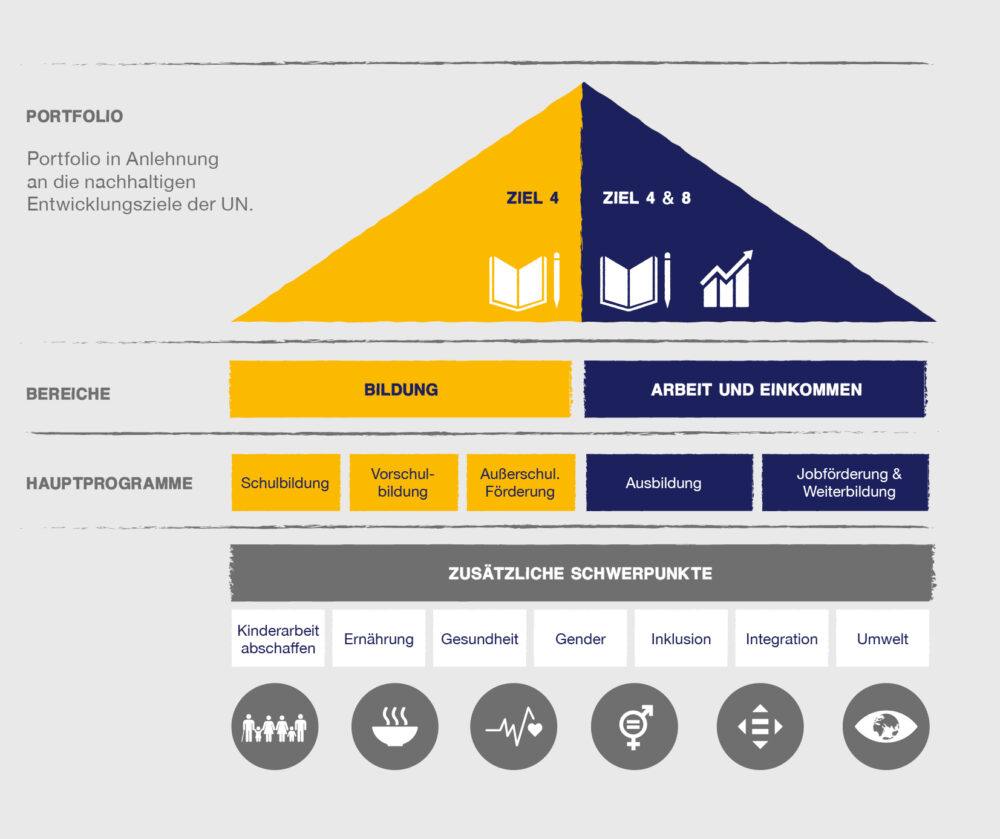
Impact Logic
The approaches to our project work always focus on the needs of the local people and counteract local challenges. To address these challenges, help alliance is guided by recognized goals and conventions, such as the Sus-tainable Development Goals and the United Nations Universal Declaration of Human Rights. Sustainable Development Goal 4 “Quality education: En-sure inclusive, equitable and quality education and promote lifelong learn-ing opportunities for all” and Goal 8 “Decent work and economic growth: Promote sustained, inclusive and sustainable economic growth, full and productive employment and decent work for all” form the central focal points of help alliance’s work. help alliance contributes to the achievement of these goals with the following approaches:

To ensure that our work contributes to sustainable development, we have always measured and evaluated the work of the individual help alliance projects. In 2020, we conducted a comprehensive impact measurement across all help alliance projects using the so-called IOOI method for the first time.
The impact logic of this method consists of four areas that build on each other: inputs (= resources), outputs (= services), outcomes (= effects at the level of the target group) and impacts (= effects at the societal level). Inputs include all of the resources required to implement a project realistically, i.e., the funding, full-time and voluntary staff, as well as the premises, equipment, etc. Outputs include the services that the various proj-ects offer. If the target group uses these services, this is also an output. Outcomes are the effects at the level of the target group. They illustrate the positive changes that the project strives to bring to its beneficiaries. Finally, impacts describe changes at the societal level, e.g., changes in the social or economic situation of society, and always refer to a part of society, such as the population in a socially disadvantaged neighborhood or region.Goals 4 and 8 of the United Nations Sustainable Development Goals, as well as their corresponding subgoals and indicators, provide the basis for our impact logic.


